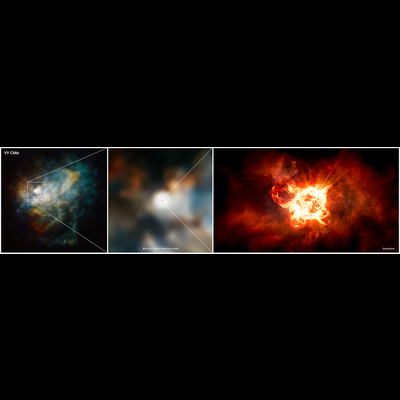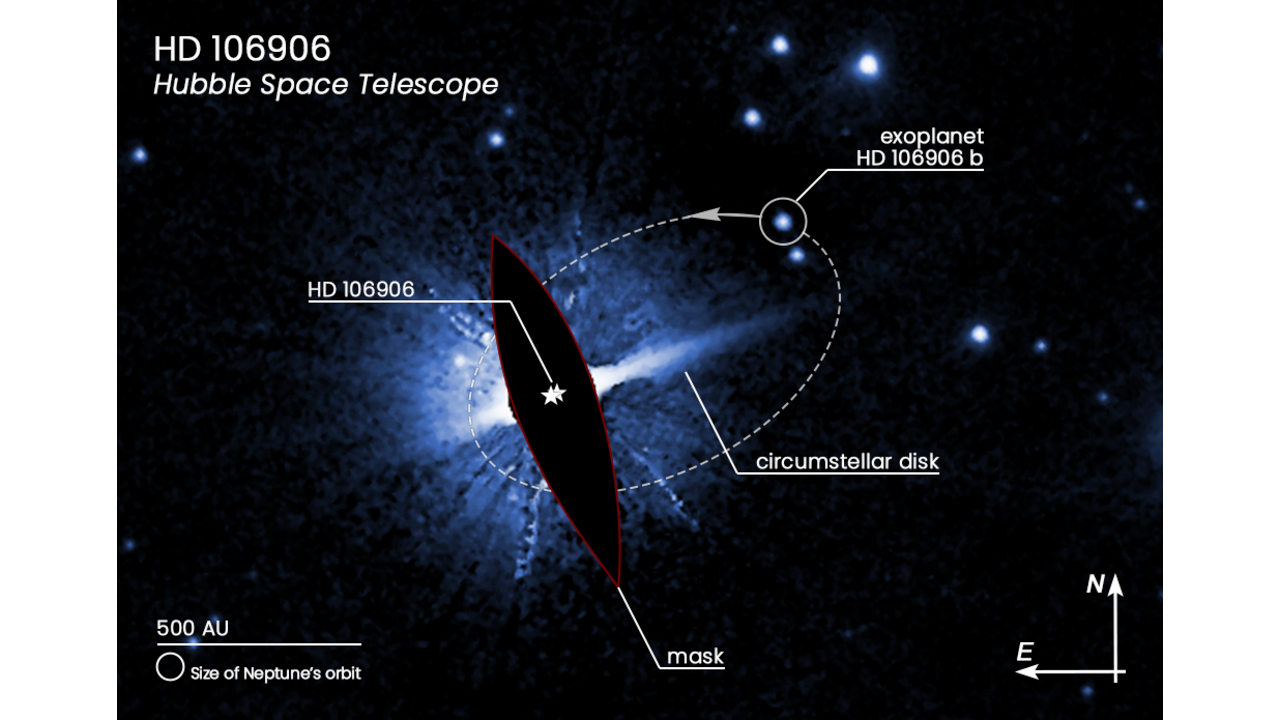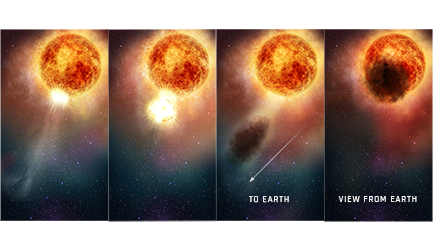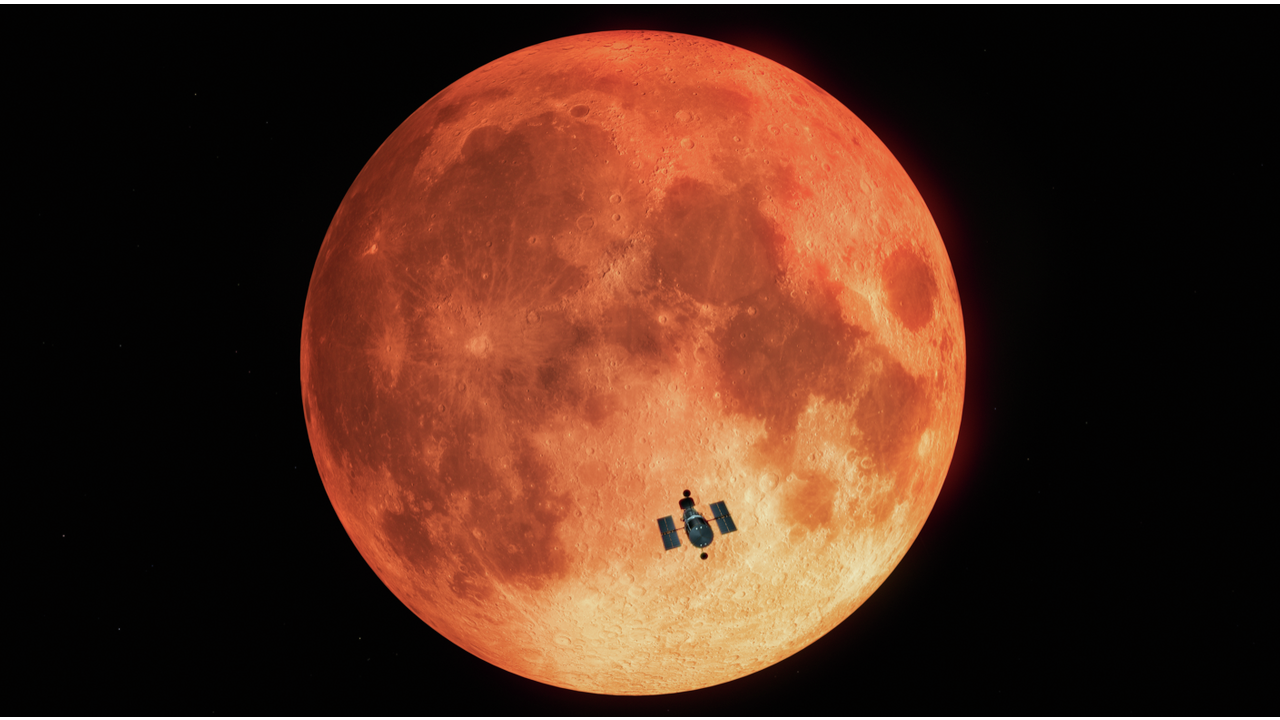Astronomers have used Hubble to see closer than ever into an energetic monster black hole powering 3C 273, the first quasar ever discovered. The new image details a lot of weird things: filaments, lobes, and a mysterious L-shaped structure, all within 16,000 light-years of the black hole.
Tag: Space Telescope Imaging Spectrograph (STIS)

Hubble Solves Mystery of Monster Star’s Dimming
Hubble astronomers are investigating the dimming of one of the most colossal stars ever seen, VY Canis Majoris. Big enough to swallow our solar system out to Saturn’s orbit, the faded star is expelling huge dust clouds late in its life.

Hubble Pins Down Weird Exoplanet with Far-Flung Orbit
Astronomers analyzing Hubble images of the double star, HD 106906, have discovered a planet in a huge 15,000-year-long orbit that sweeps it as far from its stellar duo as Planet Nine would be from our Sun. This is observational evidence that similarly far-flung worlds may exist around other stars. Researchers hypothesize that the planet wound up there in a game of planetary pinball where the gravitational pull of a passing star modified the orbit’s shape.

Hubble Finds that Betelgeuse’s Mysterious Dimming Is Due to a Traumatic Outburst
Hubble Space Telescope observations show that the unexpected dimming of supergiant star Betelgeuse was probably caused by an immense amount of hot plasma ejected into space. The plasma cooled, forming a dust cloud that blocked starlight coming from Betelgeuse’s surface.

Hubble Uses Earth as a Proxy for Identifying Oxygen on Potentially Habitable Planets Around Other Stars
Astronomers used Hubble during a total lunar eclipse to detect ozone in our planet’s atmosphere by looking at Earthlight reflected off the Moon in ultraviolet wavelengths. This method serves as a proxy for how astronomers will observe Earth-like exoplanets in search of life.